Due to the benefits of digital printing for label applications, Durst’s Tau 330 digital press promises quality and productivity reports Rushikesh Aravkar
Durst introduced its Tau 330 digital UV narrow web label presses in India during Labelexpo India at Pragati Maidan. The 13-inch Tau 330, which was unveiled at Drupa 2012, is based on the company’s 165mm (6.5inch) wide Tau 150 8C introduced in 2009.
Reifenhauser (India) Marketing represents Durst for the range of its label printing machines.
Helmuth Munter, segment manager for label printing at Durst, Italy says, “When it comes to conventional labels, the Indian market is the same as other markets but for digital, this market is still at a nascent stage. India will play a much bigger role as far as digital is concerned in the coming years.”
Based on the UV inkjet technology, Tau 330 is designed to handle short and medium run narrow web applications economically and efficiently, regardless if only one label, a few hundred labels or several thousand labels are needed. Munter says, “This will convert unprofitable short run jobs on conventional presses into profitable jobs on a Tau 330.”
According to Munter, pre-press is the key to quality in case of digital. Therefore, once the pre-press is strong, operations on the press are linear, so there is excellent reproducibility. This makes digital a right tool for short- or medium-runs.
The Durst’s press is available in two variants: Tau 330 with print width of up to 330mm and Tau 330/200 with print width of up to 200mm.
UV inkjet technology
Being a key player in the wide-format market since 2000, Durst has achieved expertise in UV inkjet technology. In 2003, it entered into ceramic printing with its single pass technology. This meant a static printhead, images on a rapidly moving substrate.
Munter says, “In 2008, we decided to move into label printing using the single-pass technology. As we always had inkjet as our core technology, we started looking for the market sectors where this technology can add benefits.”
According to Munter, UV inks are durable and will form a good fit for the label market with the single-pass technology. Durst introduced its first UV digital label press in 2009 at Labelexpo Europe. “Since then we are in label market. We started with a small very narrow web press which was 5-inch wide of which we have installed around 25 machines worldwide (15 in Europe)”
The UV inkjet offers scalability in terms of width and speed; it provides flexibility to eject fluids such as metallic inks and spot varnish to create glossy effects.
Wide colour gamut
The Tau 330 offers a wide colour gamut covering up to 90% of Pantone gamut. For this, it uses a combination of orange and violet colour in addition to CMYK.
Munter says, “As compared to conventional flexo, the UV inkjet offers a new range of colour configurations. With standard CMYK, we achieved 65-70% of the pantone range. Incorporating additional process colours enables us to reach up to 90% depending on the substrate.”
In addition, Durst UV inks generate a perfect opaque white in a single pass which is “superior to flexographic” according to Munter.
One of the key advantages of UV inkjet is high degree of scratch and chemical resistance. The printed substrate does not require any varnishing or post-press coating. In addition, it offers high light fastness up to 7 or 8 of blue wool scale without any lamination. “Whenever durability is the requirement, then UV inkjet is the right solution,” observes Munter.
Workflow
The Tau 330 is equipped with Esko’s RIP software and built-in substrate calibration and colour management tool, which offers a fully automated workflow. The incoming files are ripped, colour management is applied and ready to print files are automatically sent to the queue manager of the press. At queue manager, the operator can rearrange the job as per the priority.
Munter says, “The operating personnel have to select the job to be printed and mention the print run. The machine will automatically load the substrate profiles and other settings from electronic job ticket.”
“So the skills that an operator needs to have on a conventional press are not required here,” highlights Munter.
Applications
Being a non-contact printing process, UV inkjet enables accommodation of substrates by mere adjustment of printheads. The Tau 330 is capable of handling coated as well as uncoated paper and transparent films such as PP, PE, PVC, BOPP, aluminium foil. “The press can operate self adhesive substrates ranging from 0.1mm to 0.3mm and aluminium foil as thin as 0.02mm (20 microns),” says Munter.
The press is suitable for variety of label jobs such as industrial and security type labels for electronics, automotives, paints, food and beverages etc.
The Tau 300 comes with an optional variable data printing (VDP) module especially for pharmaceutical applications such as sequential numbering, barcodes, QR code as well as variable images. “In case of VDP, inspection system comes into picture which we offer as an add-on with our machine.”
The machine, with its insetter function, is capable of printing on pre-die-cut or pre-printed labels. “This allows production of versioning jobs that were pre-printed earlier and are now being finalised with static or variable text, sequential numbering or barcodes,” states Munter.
Speed and control
The top printing speed at full colour for Tau 330 is 48 metres per minute (23,040 metres during an eight hour shift). Munter says, “The print speed provides fastest production time thereby reducing labour and machine hour costs.”
The press uses Xaar 1001 hybrid side shooter grayscale print heads which facilitates drop on demand with variable drop size. This helps the machine deliver a resolution of 1000dpi, providing nearly photographic image quality. “The special print head arrangement allows us to double the resolution and printing speed,” adds Munter.
Training and support
Reifenhauser India has been appointed as the Indian representative of Durst for digital label presses since Drupa 2012. Munter says, “Our local partner in India will carry out the sales and service support with their trained engineers. They will also stock and supply Durst UV inks to the customers.”
Munter concludes, “The Indian market shows good potential for short- and mid-run applications in label printing. This market is growing fast and with large enterprises coming to India through FDI, will add to the surge.”
He continues, “Tau 330 will be very suitable for printers especially for on-demand printing, which allows them to reduce cost and production times involved as digital printing saves the complete state of plate making and reduces press preparation times and material waste.”
|
Technical Specification
|
|
Speed up to 48 m/min
|
|
Capacity up to 950 sq/m per hour
|
|
Max width 33cm (13inch)
Substrate thickness 0.1-0.3 for self adhesive, >0.02mm for alu foil
|
|
Substrates coated and uncoated paper, white or transparent filmPE,PP,PVC,BOPP, Alu foil
|
|
Contact
Bharath Yalla
Reifenhauser (India) Marketing
+91 22 26862711
bharath@ reifenhauserindia.com www.reifenhauserindia. com
|
The Alternatives
Nilpeter Caslon
CASLON is an inkjet printsystem based on Xaar 1001 greyscale printhead technology. The system consists of four print bars each with five (310 mm print width) or six (420 mm print width) print heads. The Caslon printing system is mounted on a standard Nilpeter FA-platform and can be configured as a standalone digital printing engine, or incorporated as a module within a given FA-configuration.
Max speed 50 m/min
Max print width 330 mm (13inch) / 410 mm (16inch)
Max roll diameter 1,000 mm
Contact Nilpeter India, Manish Kapoor, +91 9891414340
manish@nilpeter.com/www.nilpeter.in
HP Indigo WS6600
The HP Indigo WS6600 Digital Press makes it economical to digitally print the vast majority of all label jobs, at any run length. The automation embedded in the HP Indigo WS6600 digital press lowers the need for operator intervention and increases uptime.
Max speed Up to 29.87 m/min in four-color mode; up to 39.92 m/min in enhanced productivity mode; up to 159.74 m/min in one- or two-colour mode
Max print width 317 mm (12.48 inch)
Max roll diameter 1,000 mm
Contact HP India, Ajay Raorane, +91 9321925751 ajay.raorane@hp.com



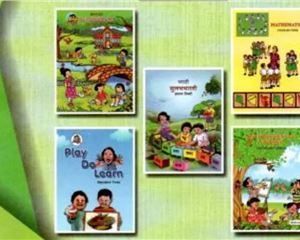
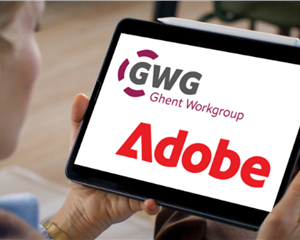
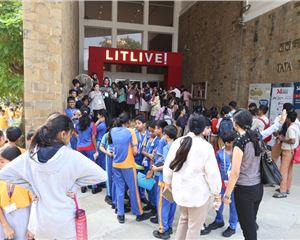
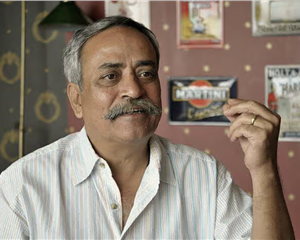
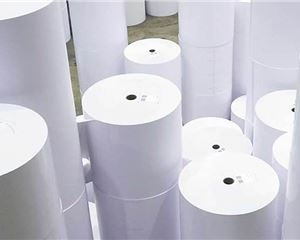




 See All
See All